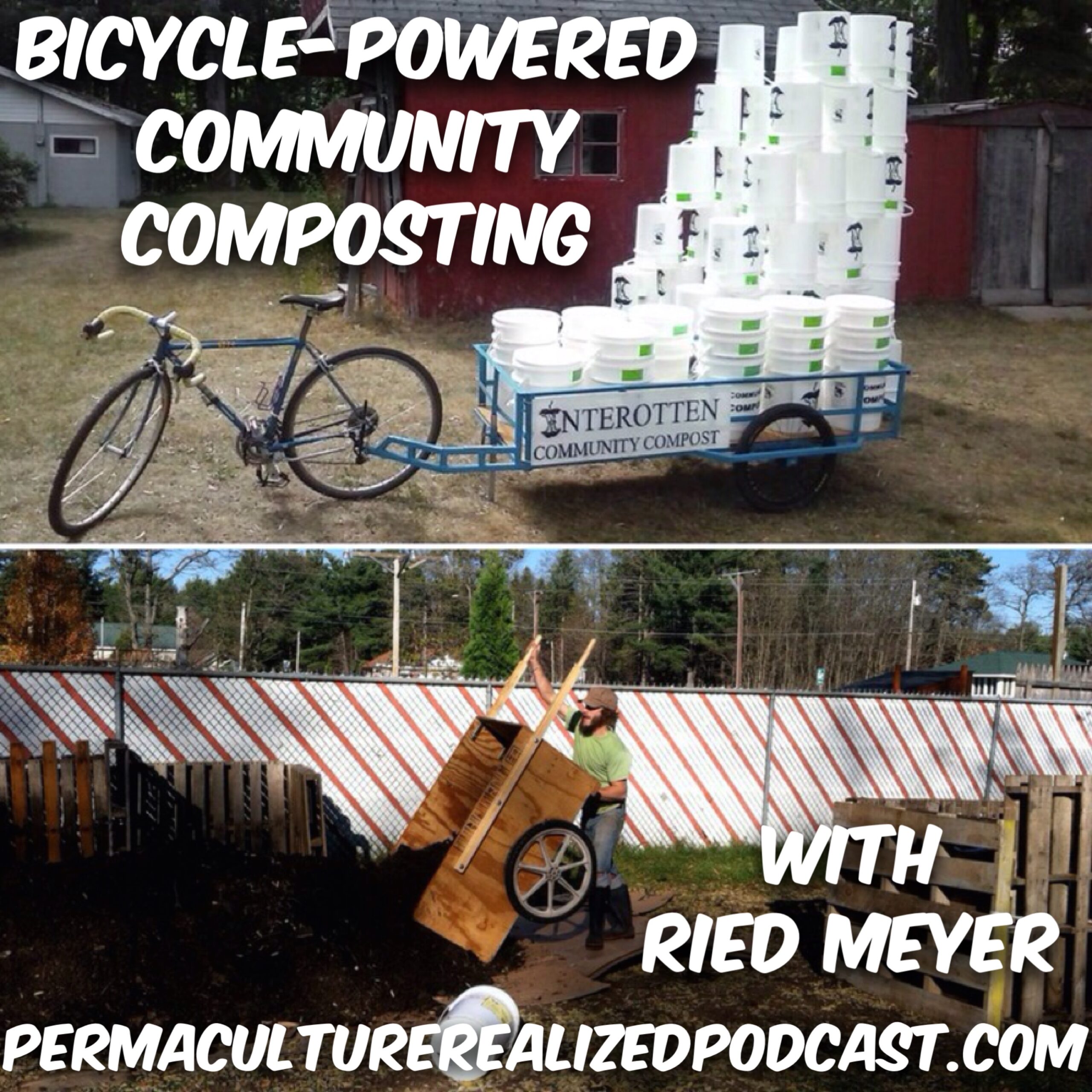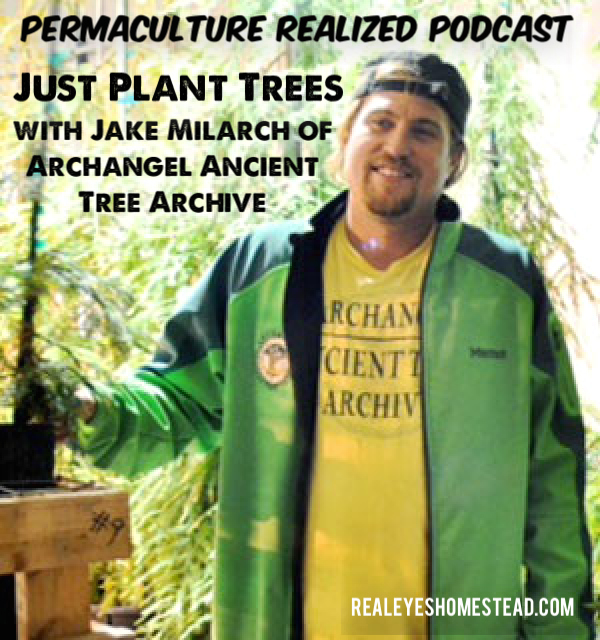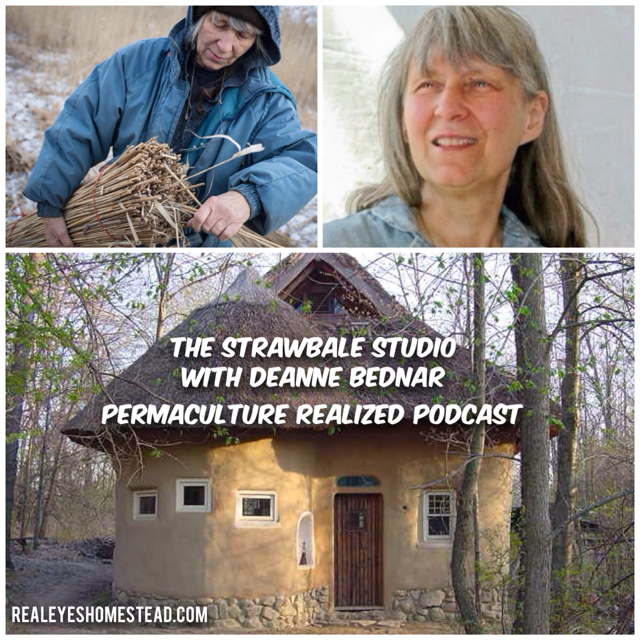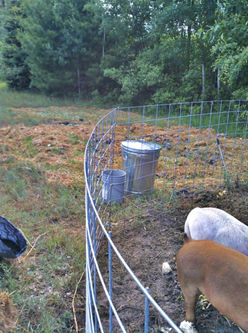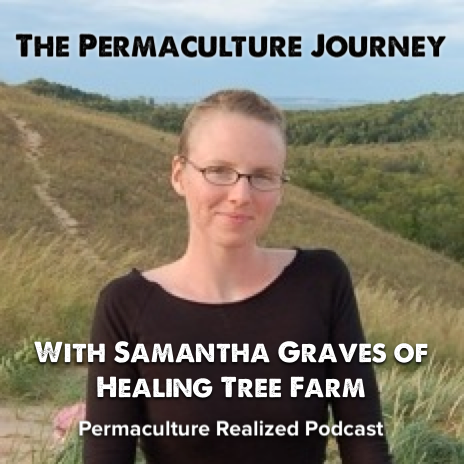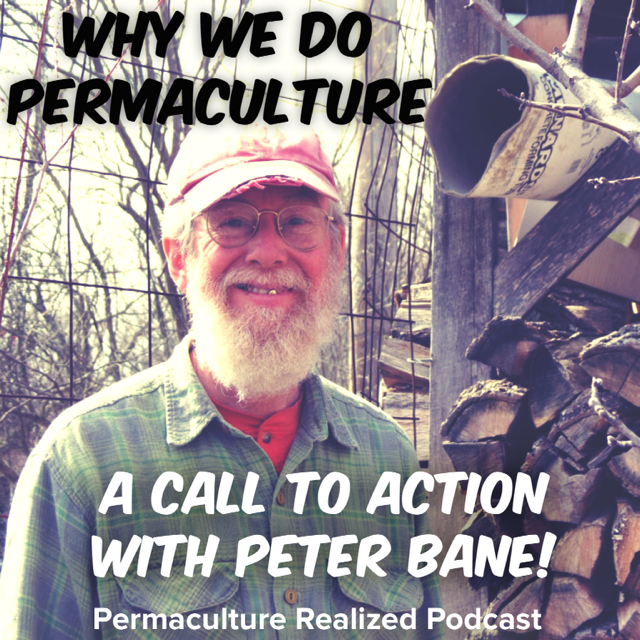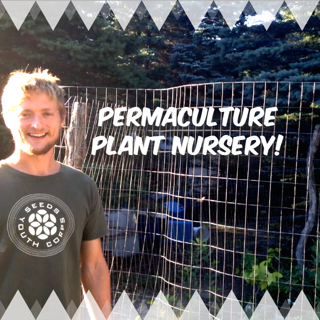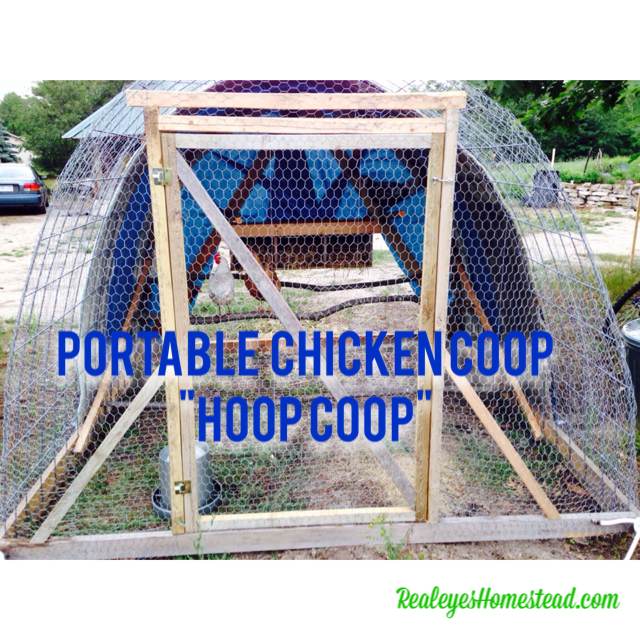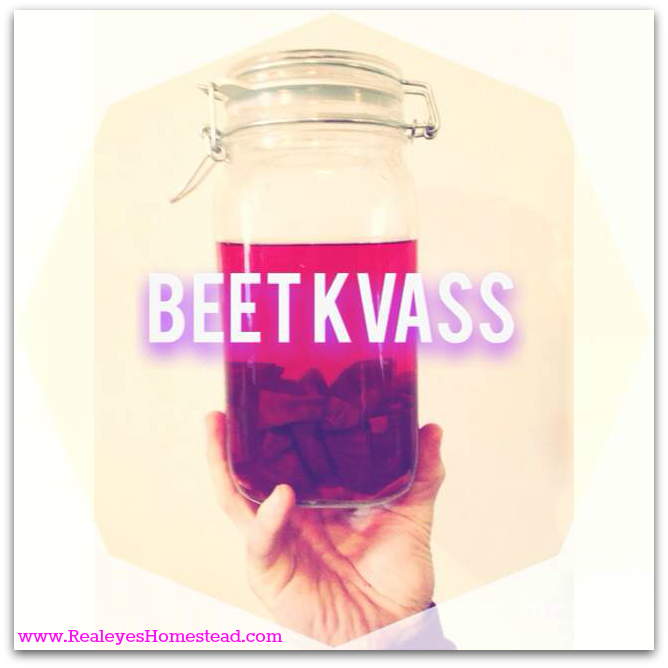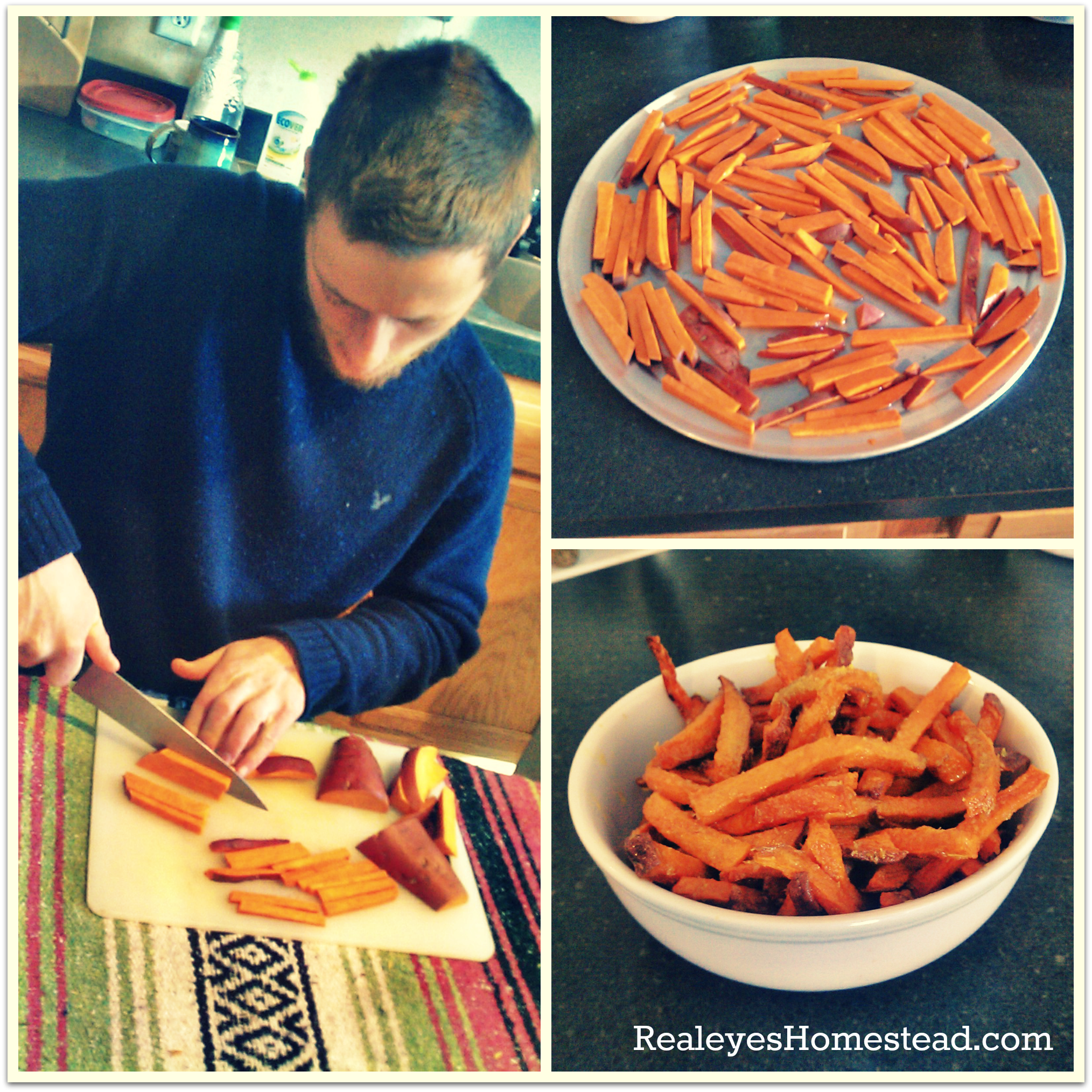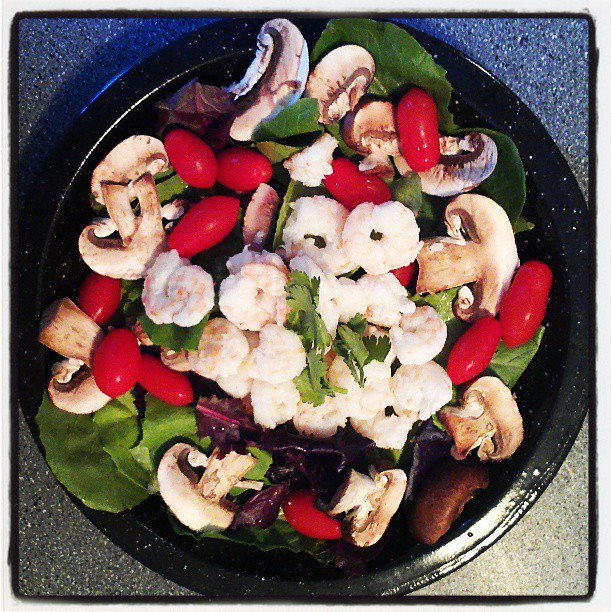Articles, Videos, Podcasts, Oh My!
Latest of All Forms
Music Magic in the Park
Written: 7-21-25 After attending Traverse City Philharmonic "Movie Magic" Concert at the Civic Center Bouncing in his lawn chair, the toddlers stick danced in the air. To him, a magic wand brought to life by the music of the orchestra on stage. Above, filtered through...
The Dungeon of Artful Delights [Short Fiction]
Written 7-3-25 “You’re living at the old paper mill!?” I asked. “Like, that haunted old concrete warehouse we’d sneak into in high school?” “Yup. That one. But it’s not actually haunted you know,” Kevin grinned, as we walked up the sandy bike trail through the woods....
Last Night in an Old Camper [Short Fiction]
Written 6-29-25 Can’t sleep. The air is too familiar. The sofa bed, too loud. Did I really believe I could escape the world’s shadow by parking a camper five hours from civilization? And the failed marriage? Just another box to check in the farm-life fantasy playbook....
Food Forest Crash Course – The Simple Blueprint I Wish I’d Started With
Today, I’m going to attempt something really difficult: distilling one of the most complex topics—food forest design—into the most practical, basic steps that anyone can follow. Starting with the Canopy Layers You’ve probably heard of the different...
How to Start a Food Forest – STEP 1: The Tree Nursery [Video]
In this video, I'm going to share simple actionable steps you can take to start your own food forest. Twelve years ago, I started planting my first food forest. If I could start over, I'd begin with a small protected area where I could temporarily plant my baby...
What is a Food Forest – And Why They Matter [Video]
What If Food Forests, Not AI or Crypto, Are the Next Disruptive Technology? I know that's a big "what if," but stick with me because in this video I'm going to explain what food forests are and why they're so revolutionary. And by the end of the video, you...
What’s Happening at Realize Homestead – Local Radio Interview WUWU-LPFM 100.1
I was recently invited by Dan Kelly to be a guest on his show, The Farm Report, on the local radio station WUWU-LPFM 100.1, a low power radio station based out of Elberta, Michigan. It was a fun chat in which we talked about the land I'm homesteading on, the...
Titanic Metaphor – Our Predicament
I have a habit of getting inspired, or having a new insight and writing down pages of thoughts only to leave it unpublished and unfinished. I think this is because, in my head, every idea is connected to dozens of other ideas in interesting ways and it's hard for me...
A Lost and Found Life [Story-Poem] June 2024
[Music: Edge Hill by Groove Armada] You awaken, a child, as though for the first time, and wonder at the infinite living rainbow dancing...
The Potato Appeal
View this post on Instagram A post shared by Levi (@levimeeuwenberg) 💪 🥔 Potato Power! 🥔 💪 I found this story interesting and inspiring! I'd never heard about the Potato Uprising in Sweden before. (And you gotta love those cheeky billboards 😆) Potatoes are one of the...
Check Dams – Fixing Drought & Mitigating Climate Change
View this post on Instagram A post shared by Levi (@levimeeuwenberg) 👇 Juicy Details Below 👇 Listen up if you care about WATER! These loose rock piles, also known as "check dams," when placed strategically within a watershed, can have powerfully transformative...
Pollinator Paradise & Butterfly Goo
View this post on Instagram A post shared by Levi (@levimeeuwenberg) Firstly, please enjoy the incredible flowers grown by the amazing @pennyok ! (The pollinators certainly are!) She's a garden painter and a painter of gardens. Now, heres a cool fact about butterflies...
Garter Snakes for Your Garden!
View this post on Instagram A post shared by Levi (@levimeeuwenberg) Garter snakes help out in the garden by eating common pests like rodents and slugs. (and are non-poisonous!) 😎 You can attract them by creating snake habitat with a loose pile of stones. This...
Shiitake Mushroom Log Flush
View this post on Instagram A post shared by Levi (@levimeeuwenberg) Shiitake mushrooms are one of the tastiest and easiest to grow. 🍄 🍄 🍄 🍄This was the biggest flush of the season so far! They'll do this once or twice a year, but sometimes also produce smaller...
Pig Zoomies!
View this post on Instagram A post shared by Levi (@levimeeuwenberg) It makes me smile when the pigs get so happy and zoomy in their new pen! ☺️Meet Steve Buscemi, Dot and Poppy. 🐖 🐷 🐽
Full-Circle Chickens!
View this post on Instagram A post shared by Levi (@levimeeuwenberg) 👇 What are Full-Circle Chickens? 👇 Livestock, like chickens, aren't inherently bad for the environment. They can actually be beneficial if managed properly. 🌱 🌿 🌳 'Full-circle Chickens' is the fun...
How to Start Homesteading with Permaculture – Understanding the Land [VIDEO]
Hey friends! In this video, I'm going to walk you through some of the first steps to getting started with homesteading and permaculture. In previous videos, I focused more on the "why" permaculture and homesteading are more than just cool hobbies but are...
What is Truly Important – LEAP Idea Faire 1 2023
**See full prompt and other responses on the NWMI LEAP Website here.** What is Truly Important? A question of values, of priorities. And a good question I try to revisit often throughout my life. When I pose this question to myself, my mind goes in a few...
Plant Nursery – Trees, Shrubs, & Herbs
One plant, potted🥚 Confused by the egg currency? Learn more here. 🥚Trees: Redbud Heartnut English Walnut Chinese Chestnut Hardy Pecan White Oak Black Locust Osage Orange White Pine Korean Nut Pine Shagbark Hickory Nut Persimmon White Mulberry Red Mulberry Asian...
Full-Circle Pasture-Raised Chicken Eggs, Non-GMO
Dozen Eggs, washed🥚 Confused by the egg currency? Learn more here. 🥚Our chickens (and Guinea fowl) are raised on pasture where they forage the living bugs and plants for much of their diet. We also pick up food waste from the local organic food Co-op, Oryana, and...
Levi’s Guest Appearance on the Height Drop Parkour Podcast
My parkour buddy, Brandon Douglas, invited me to appear on his Height Drop podcast. It was a fun chat, in which we discussed my parkour journey, getting into farming and sustainable living, existential threats, narratives, soil depletion, regenerative...
Permaculture Realized Podcast Episode 37, Carbon Tax: How it Works with Lina Bird
Todays guest is Lina Bird who is very active in the Washington DC branch of the Citizens Climate Lobby. The Citizens Climate Lobby is a non-profit, non-partisan grassroots organization with chapters all over the country, with the aim of lobbying for national policies to address climate change. One of their primary policies is a Carbon Tax and Dividend.
Permaculture Realized Podcast Episode 36, Our Right to Farm with Randy Buchler
This past winter I had the pleasure of visiting my friends Randy and Libby Buchler and their family at their farm, Shady Grove Farm in Michigans Upper Peninsula. In 2009, they recieved a notice for alleged zoning violations regarding their agricultural activity. Through a ton of research and collaborations, they were finally able to win back their Right to Farm in a 2012 court case. Today Randy Buchler joins us to share their story of how they achieved success.
Permaculture Realized Podcast Episode 35, We Are the Forest with Nathan Ayers
Today we’re talking to Nathan Ayers who teaches Permaculture to students of all ages in Michigan. This is Nathans second time on the show, and it’s always a great time having him. If you like this one, be sure to check out Episode 18 as well where we discussed water solutions to the Flint, MI Water Crisis.
Today we talk about Nathan and his brother Nick’s exciting new project; We Are the Forest. In addition to their work in the Ann Arbor/Ypsilanti area, they are also involved on Beaver Island.
Permaculture Realized Podcast Episode 34, How to Start an Edible Plant Nursery with Sean Dembrosky
This weeks episode is about how to start your own edible permaculture plant nursery with special guest, Sean Dembrosky of Edible Acres. Edible Acres is a small homestead and plant nursery that Sean runs in the Finger Lakes area of New York State. Today, he shares with us some great tips to getting started or improving our own plant nurseries.
Introduction to Apple Tree Grafting with Trevor Newman [Video]
INTRO TO APPLE TREE GRAFTING (BENCH GRAFTING) WITH TREVOR NEWMAN
Clever Tricks for Planting and Propagating Gooseberry Bushes (and Currants) [Video]
CLEVER TRICKS FOR PLANTING AND PROPAGATING GOOSEBERRY BUSHES (AND OTHER RIBES, LIKE CURRANTS) WITH TREVOR NEWMAN
How to Establish Understory/Groundcover Plants in your Orchard or Forest Garden [Video]
A really good way to integrate ground cover species is overseeding either into the existing vegetation or into the compost mulch pits. We typically use a combination of like legumes like clover and veg and all that stuff and then top rooted plants like daikon, turnip, chicory, things like that they have deep taproots.
Permaculture Realized Podcast Episode 33, Ecologically Regenerative Animal Agriculture with Peter Allen
Today we’re talking to Peter Allen who runs Mastodon Valley Farm in Wisconsin. Before getting in to regenerative farming, Peter was a student of ecology and complex systems theory, so he brings a unique an informed perspective to the use of animal agriculture as a method of managing landscape for ecological health.
Permaculture Realized Podcast Episode 32, Bicycle-Powered Community Composting with Ried Meyer
Today’s guest is a good friend of mine who started up a bicycle powered community compost pickup business here in Northern Michigan. We discuss his experience with starting up the project, why this model has a ton of oppotunity for others to step up and replicate it, and tips on how you can start your own!
Permaculture Realized Podcast Episode 31, Top Plants for Temperate Climate Permaculture with Bryce Ruddock
Today’s guest Bryce Ruddock, is an author, educator and avid forest gardener from Wisconsin. Today Bryce shares his favorite plants to grow from among the hundreds of species that he’s experimented with at his home. I definitely recommend getting your notebooks out for this episode because Bryce shares so many great species and resources that deserve a closer look by anyone interested in gardening like an ecosystem.
Permaculture Realized Podcast Episode 30, Air, Water, Food, Shelter, Kinship, Meaning (Part 2)
This episode is a follow up on episode 27. If you missed it I highly recommend you check it out. In that episode we did an analysis of what humans need to flourish. So now, using what we learned from the past episode, this week we’re going to go into kind of the goal setting part of the design process if you want to look at it that way, but basically just looking at how we can respond to the situation that we’re in. How we can adapt.
Permaculture Realized Podcast Episode 29, Peter Bane 2020 – Climate Cooling We Can Believe In!
Today’s guest is Peter Bane who is the president of the Permaculture Insitute of North America, he wrote the Permaculture Handbook, literally, he has built and lived in eco-villages and self-sufficient homesteads for decades. and has taught dozens and dozens of courses and workshops all over the world. He’s the real deal, as you’ll soon learn.
Permaculture Realized Podcast Episode 28, Inside COP22 Marrakech with Albert Bates
Todays guest is Albert Bates who we spoke to last year because he attended the COP21 Paris Climate Conference so he gave us the inside story on that in Episode 16.
Albert also went to the latest Climate Conference, COP22 in Marakech and so he’ll be sharing with us what the so-called world leaders are doing about Climate Change and many other environmental issues.
Permaculture Realized Podcast Episode 27, Air Water Food Shelter Kinship Meaning (Part 1)
There’ll be few main parts to this episode. I’m going to start out by doing a survey of kind of our basic biological human needs. So you know food, energy, shelter, connection, love that type of thing. (our global life support systems) And look at those within the context of how we go about meeting those needs and how that has changed over time especially from pre-agriculture revolution and then after the agriculture revolution and now into modern technological age.
We Began to Romanticize the Wilderness – Wendell Berry
“Apparently with the rise of industry, we began to romanticize the wilderness -which is to say we began to institutionalize it within the concept of “scenic.” Because of railroads and improved highways, the wilderness was no longer an arduous passage for the traveler, but something to be looked at grand or beautiful from the high vantages of the roadside. We became Viewers of “views.”
Permaculture Realized Podcast Episode 26, Choosing the Best Homestead Property with Ben Falk
Today’s guest is Ben Falk who created and runs Whole Systems Design out of Vermont, and is also the author of the book The Resilient Farm and Homestead. Today we discuss how to go about finding the right homestead property for natural living and some of key decisions like siting your house.
Permaculture Realized Podcast Episode 25, Permaculture Homesteading with Justin Rhodes
Today’s guest is film producer, author and teacher Justin Rhodes who has been running his 75 acre permaculture farm near Asheville, NC for many years. He’s here to share with us some of the many lessons he’s learned along the way, and give some pointers to those getting started.
Permaculture Realized Podcast Episode 24, Growing Nutrient Dense Food with Dan Kittredge
Today’s guest, Dan Kittrege has been an organic farmer since childhood, and has been developing a deep understanding of how a nutrient rich soil leads to healthier plants and healthier foods and ultimately healthier people and planet. He created the Bionutrient Food Association to promote this understanding of growing nutrient dense food. He also runs Kittredge farm in Brookfield, MA where he does his research and practices the science.
Permaculture Realized Podcast Episode 23, Permaculture Farming at Cooperative 518 with Alec Gioseffi and Lauren Nagy
Today’s guests Alec Gioseffi and Lauren Nagy run the CSA Farm Cooperative 518 in Princeton, New Jersey. They provide nourishing food to the local community using permaculture farming practices. The farm is home to chickens, cats, sheep, pigs, nine humans, veggies, herbs, flowers, a small upcycled greenhouse, a large seasonal hoop house, and two tiny homes.
Our Strawbale Passive Solar Greenhouse Folly
Two years ago, Brenda and I were renting an apartment and I would commute to the farm every day to take care of our pigs, chickens, gardens and plant nursery. This situation quickly made it clear to me how important it is to actually be LIVING on the land you’re farming. This is because farming is really a lifestyle more than it is a job that you can just leave when you’re done. It makes demands of you that no job every would. This was how the adventure of our strawbale passive solar greenhouse began.
Permaculture Realized Podcast Episode 22, How to do Non-Profit Permaculture with Robyn Mello
Today’s guest is Robyn Mello. I met Robyn in November at the Advanced Permaculture Course I took in Akron, OH. I got to learn all about the non-profit she works for, the Philadelphia Orchard Project. They’re putting in public orchard and forest gardens all around Philadelphia. Robin has learned a ton about what it takes to run a successful urban agriculture focused non-profit permaculture organization so that’s the theme of today’s interview.
Permaculture Realized Podcast Episode 21, Creating an Abundant Permaculture Group with Jesse Tack
Today’s guest is Jesse Tack based out of Ypsilanti, Michigan. Jesse founded and helps run the very active permaculture group; Abundant Michigan Permaculture Ypsilanti. Or AMPY for short. We get to hear about how AMPY got started and has evolved since then.
Permaculture Realized Podcast Episode 20, Creating a Permaculture Guild with Kate Heiber-Cobb
Today’s guest is Kate Heiber Cobb, who created and runs the Madison Area Permaculture Guild out of Madison Wisconsin. She is a Permaculture teacher and educator, and has done a lot with bringing Permaculture to urban regions. Today we talk about her story, how she created the guild, projects they’ve done and lessons learned along the way. It keeps getting better the deeper into the interview we go so make sure to listen to the end!
Permaculture Realized Podcast Episode 19, Why Should I Take a Permaculture Design Course? with Rhonda Baird
That’s a taste of some of the types of things you would learn by taking a Permaculture Design Course. Today I’m talking to Rhonda Baird about why you would want to take a PDC, what it covers, and what you get out of it. Rhonda has been a Permaculture teacher for 10 years and shares her journey from taking her first PDC, to today where she has a thriving homestead and teaches numerous PDCs a year. She will also be one of the guest teachers for the upcoming PDC here in Traverse City this spring.
Permaculture Realized Podcast Episode 18, Flint Water Crisis Permaculture Solutions with Nathan Ayers
Today’s guest is Nathan Ayers, who heads up Chiwara Permaculture out of Ann Arbor, Michigan and is currently focusing on Flint Water Crisis Permaculture Solutions. Nathan also does a lot of work integrating permaculture into traditional educational institutions from kindergarten all the way up through the university level.
Permaculture Realized Podcast Episode 17, Carbon Farming – Crops to Stop Climate Change with Eric Toensmeier
Eric Toensmeier is the award-winning author of the books Perennial Vegetables and Paradise Lot, which describes how he converted his run-down city lot into a diverse plant sanctuary in Massachusets. He was also the co-author to Dave Jacke from episode 14 on the two volume set Edible Forest Gardens. Eric has a brand new book about to come out about Carbon Farming and the strategies that agriculture can use to sequester CO2 to help mitigate climate change.
Permaculture Realized Podcast Episode 16, COP21 Insights from the Paris Climate Conference with Albert Bates
Albert Bates is a longtime influential figure in environmental activism, and the ecovillage and permaculture movements. He’s a lawyer, an author and a teacher, who has been director of the Ecovillage Training Center at The Farm in Summertown, Tennessee since 1994.
Permaculture Realized Podcast Episode 15, Spiral Ridge Permaculture with Cliff Davis
Today’s guest, Cliff Davis was telling me that having all those pigs and plants to care for makes it hard to leave home and travel to experience new cultures and perspectives. And he values those experiences for personal growth and expansion, plus their a great source for new ideas. But fortunately there’s a continual flow of students and interns coming through his place, Spiral Ridge Permaculture…
Permaculture Realized Podcast Episode 14, Edible Forest Gardens, Coppice, and Culture Design with Dave Jacke
Today’s guest is Dave Jacke who has been mentioned several times already in previous episodes. He was the co-author of the book that I’m no longer allowed to call the “bible” of designing edible forest garden ecosystems, which is Edible Forest Gardens Volumes 1 and 2.
Permaculture Realized Podcast Episode 13, Sacred Earth Landscaping and Farm with Eran Rhodes
Today’s guest is Eran Rhodes of Sacred Earth Landscaping soon to be based out of his new family farm in Benzie County, Michigan. Before moving northwards, he started his own permaculture landscaping business in Chicago, traveled around working at many sustainable farms around the country, and also worked at Oikos Tree Crops nursery. Him and his family have a beautiful vision for their new farm. Check it out.
Permaculture Realized Podcast Episode 12, Putting the Art in Permaculture with Penny Krebiehl
Our guest today is a creative individual who brings the community together, and connects like-minded people. She teaches and spreads permaculture, she’s an artist, a garden-farmer, a teacher, and can make a real tasty pie. She’s my good friend, Penny Krebiehl.
Pastured Pig Dueling / Dominance Fighting
We put pigs together into a pen for the first time, and the mamma fights another pig for dominance while her piglet tries to nurse. Get out of the way piglet!
DIY Winter Pig Pen Idea with Pallets and Pine Trees
Here’s our winter pig pen made out of old pallets. It’s about an acre of fencing enclosing a thick patch of blue spruce trees. The spruce helps provide shelter from the wind and snow for the pigs, and we give them straw to insulate from the ground.
Permaculture Realized Podcast Episode 11, Regenerative Agriculture with Paul and Sharron May of The May Farm
Today’s guests, Paul and Sharron May, run a small farm called The May Farm in Frankfort, MI near us here in the northern part of the Lower Peninsula. They apply a permaculture approach to their homestead, and farm, and have been seeing some spectacular results.
Permaculture Realized Podcast Episode 10, Just Plant Trees with Jake Milarch of Archangel Ancient Tree Archive
An old-growth forest is a forest that has lived for many centuries, sometimes even millenia without significant disturbance and so they possess unique ecological features found no-where else on earth.
Permaculture Realized Podcast Episode 9, City Permaculture, Design of Urban Landscapes with Levi Meeuwenberg
Today’s episode is a little unique because there is no guest to interview. Instead I’ll be sharing some of the many take-aways from a recent Advanced Permaculture Design Course I took in Akron, Ohio.
This will be a way to help share and spread good ideas, as well as a good process for me to review my own notes and become more familiar with the material.
Permaculture Realized Podcast Episode 8, Creating Edible Landscapes and Forest Garden Ecosystems with Fred Meyer
Today’s guest is Fred Meyer, who is the founder of the non-profit called Backyard Abundance in Johnson County, Iowa. Backyard Abundance creates beautiful, environmentally beneficial landscapes that produce food for humans and wildlife. Basically, Fred and his team are turning lawns into food producing ecosystems, or Forest Gardens all over town, both in public parks, and around peoples homes.
Permaculture Realized Podcast Episode 7, The Strawbale Studio, Thatch Roofs, Earth Plaster and Natural Building with Deanne Bednar
Today’s guest is Deanne Bednar, who runs the Strawbale Studio, which is a education, and demonstration center for natural building, and natural living.
Permaculture Realized Podcast Episode 6, Woodcraft, Ecological Design, and Holistic Farm Integration with Mark Angelini
Todays guest is Mark Angelini, the other half of Roots 2 Fruits Ecological Design in Southern Michigan. We had his business partner, Trevor Newman, on here on episode 3. Mark is a generalized specialist. His work spans from art and design, to craft and woodwork, farming, gardening, forestry and of course, apple growing and cider making. Today we get to hear some updates on several of his projects, and his journies along the way.
Permaculture Realized Podcast Episode 5, Commercial Scale Composting and Recycling with Andy Gale
Early in the spring this year we began using Realeyes Homestead as the commercial scale composting site for Traverse City. It has been a great partnership with Bay Area Recycling for Charities, a non-profit that created and runs the composting operation.
Permaculture Realized Podcast Episode 4, Water Issues, Drought in Brazil, and Growing a New Future with Kat Curtis
Todays episode focuses on water. A broad topic for sure, but a pretty important one since basically all life forms depend on access to clean water to survive. As you probably know, our bodies are 60% water. Water is vital for lubricating our joints, flushing out toxins and waste, and transporting vital nutrients to all of our cells.
How to Make a Portable Pig Pen
Our homestead started off with just two pigs, and we got hooked. We’re up to 13 now, and we’re even breeding our own piglets! Over the years we’ve experimented with many different types of pens, fencing and paddocks for them. By no means have we “arrived at” or discovered the perfect system. But we’ve made a portable pig pen system that meets three important design criteria for us:
Upcycled Living, Our Resource Collection Zone i.e. The Junkyard 😉
This is an essential element of any sustainable homestead. Basically it’s where you store all the useful crap that you can get your hands on, before that future project comes along when you need it!!
Spontaneous Gardens Planted by Our Pigs
First we created winter pig pens using pallets that were freely available at many warehouses in town. Then we fed the pigs old vegetable waste from town throughout the winter, then covered the left overs with leaves. Many squash and tomato seeds from the food waste germinated in the spring and sprouted up through the mulch. The abundance of fertility in this location provided much plant food, and the leaves helped keep them from drying out during the summer.
Building Soil from Scratch Using Pigs and Cover Crops!
For the last couple years we have been experimenting with movable pig pens (pig tractors) and cover crops in order to build the soil fertility, and plant diversity of our pasture.
The results have been overwhelmingly positive! In just two years, we’ve transformed patches of our knapweed and beach sand site, into a thick lush pasture with diverse forage crops.
Permaculture Realized Podcast Episode 3, Restoring an Old Apple Tree Orchard and a Sip of Hard Cider with Trevor Newman
We’ve still got a LOT to learn about plant propagation, grafting, pruning and the other arts of tree cultivation. We’re blessed to have many experienced tree-whispers in our region like Archangel, and today’s guest, Trevor Newman of Roots to Fruits.
Permaculture Realized Podcast Episode 2, The Permaculture Journey: Health, Apples, Fiber and Alpacas with Samantha Graves
Today’s guest is Samantha Graves of Healing Tree Farm at the historic DeYoungs farm in Northern Michigan. There, Samantha and her family are planting a Permaculture orchard and have had livestock like chickens, sheep and alpacas and are getting involved in fiber production. Their farm actually neighbors my families farm, and we’ve been working together for a few years now.
Permaculture Realized Podcast Episode 1, Why We Do Permaculture a Call to Action with Peter Bane
Today’s guest is one my good friends and mentors Peter Bane, who is one of the most experienced permaculture teachers in the midwest. He’s the author of the Permaculture Handbook; Garden Farming for Town and Country. He’s also been the publisher of Permaculture Activist magazine for 25 years, which recently changed to Permaculture Design Magazine.
How to Use a Pig Tractor, Portable Pig Pen
This is one of our pig tractors at Realeyes Homestead. We built them out of salvaged lumber and pallets, on cedar skids so that we can drag them all around the pasture. This keeps the pigs healthy and happy because they always have fresh ground to root up and forage in, and it keeps them away from their feces accumulation.
How We Made a Permaculture Plant Nursery
Over the last few years we’ve been collecting unique and useful perennial plant species from all over the world. (except invasive species) Some we get from friends with farms and gardens, some are responsibly transplanted from the wild, and some we order from nurseries like Oikos Tree Crops. (http://oikostreecrops.com/)
How to Feed Chickens Using Compost (Food Waste)
Inspired by Karl Hammer’s Compost-Chicken Hybrid system in Vermont, we began creating a compost pile inside our portable bird pen using food scraps collected from local restaurants and grocery stores. The chickens not only get to eat the fresh veggie scraps we dump on top of the compost pile every other day, but once those are eaten, they dig into the pile to harvest all the insect decomposers and other goodies that the compost pile generates. For 70+ birds (chickens, ducks etc) we only had to supplement them with about a pound of feed daily, and could probably go grain free if we had to, using this system.
How to Build a Chicken Tractor “Hoop Coop”
In our dream world, all animals on our farm would be free-range. They would just choose to stick around and provide for us because life is so good here. Well that’s how our egg-laying hens did reside here for over a year. But recently our hens began disappearing one by one. We determined it was an aerial predator, but lost most of our flock in the process. We finally resolved to confine them for their protection, but wanted them to still have access to abundant grass and bugs from the land. Based on a little research, a portable “Hoop Coop” chicken tractor looked like just the sort of domicile our birds deserve.
Interview on Mark Shepard’s PDC with Graduate, Bryan Mets
Bryan Mets is a great friend, permaculture wizard, and founder of the Great Lakes Permaculture Portal, based in southern Michigan (Macomb). Last year he attended Mark Shepard’s Permaculture Design Course at Mark’s “New Forest Farm” in southwest Wisconsin. Ever since we devoured Mark’s book, Restoration Agriculture, we have nerded out on the fact that his farm is an actual working example of a large-acre permaculture based farm, incorporating keyline principles, swales, ponds, animal grazing, and perennial polycultures. He even grows his own biofuels to run his tractors and equipment! I’m excited to hear more about what Bryan learned at this 10 day, Permaculture farmer bootcamp. So, for both our enjoyment, I introduce the illustrious Bryan Mets!!
How to Find Chaga Mushrooms & Make Chaga Tea
What is a Chaga Mushroom?
The Chaga Mushroom (Inonotus obliquus) is a fungus that is parasitic on Birch Trees, and can be found in Russia, Korea, Eastern and Northern Europe, Northern areas of the United States (like Michigan!) and Canada. It is sometimes called the clinker polypore, cinder conk, black mass and…
Healthy Gummies / Fruit Snacks!
These homemade gummies / fruit snacks are very quick and easy to make. They are a great source of gelatin which is very beneficial for joint, skin, nail, hair, and gut health! When you make these make sure to use gelatin that comes from healthy, pasture raised animals. The gelatin we use comes from grass fed beef.
How to Build a Fence out of Pallets
After our pigs escaped the electric net fence AGAIN, we were seeking out better ways to fence them in. Andy Gale of Bay Area Recycling for Charities mentioned that they had an abundance of pallets and we could use them to build a perimeter fence. It seemed like a great idea to me, especially considering that most of the fencing I was pricing out…
How to Make Beet Kvass
Beet kvass is to bile like paint thinner is to paint! One of our liver’s job is to help remove toxins from our body. It stores many of these toxins in our bile which is stored in our gallbladder. The gallbladder releases bile into the intestines when you consume fat because bile emulsifies the fat (breaks the fat up into solution) making it easier to digest and absorb.
Sweet Potato Fries
These are a go to snack at our house! They are very easy to make and are very tasty 🙂 We add nutritional yeast to give them a cheesy flavor. Try them out and let us know what you think!
Gut Microbes, Probiotics, Leaky Gut, Autoimmune
Everyone by now has heard that our little gut microbes are a big deal! More and more people are interested in probiotics and eating probiotic rich fermented foods like kimchi or fermented beverages like kombucha. I personally love talking about gut microbes they are just so fascinating to me and their importance and prevalence…
Compost + Pigs + Chickens = Stacking Functions!
Realeyes Homestead and Bay Area Recycling for Charities are teaming up to turn city waste streams; Old Produce, Food Waste, Pallets, …into marketable products; Nutrient Rich Compost for amending gardens and farm soils, Pastured Pork, Poultry and Eggs.
Cherry, Blueberry, Spinach, & Banana Smoothie
Yum! Smoothies are a great way to incorporate raw greens and fruits into your diet. Making smoothies from frozen fruit is the way to go in the winter. If you were thinking ahead, you stocked up on fruit when it was towards the end of its season and it was super cheap because farmers just wanted to sell it ASAP.
The Permaculture Principles
Principle 1: Observe and Interact – “By taking the time to engage with nature we can design solutions that suit our particular situation.”
Principle 2: Catch and Store Energy – “By developing systems that collect resources when they are abundant, we can use them in times of need.”
Privilege in Permaculture
Privilege is one of those uncomfortable topics that most of us might feel guilty about but not really know what to do about it. I’ve heard some people claim that “Permaculture is a feel good hobby for the affluent.” And like a good permie, my response would be, “It depends…”
Welcome to the Anthropocene. Time to Adapt.
In short, life will be very very different in the future than the relative stability we’ve seen for most of our lives up to this point. Some geologists have described the current epoch as the “Anthropocene.” This is a period when almost every ecosystem on earth bares the mark of human presence. How we go about meeting our basic needs…
A Brief History of Money
Let’s talk about that oh so sexy topic; Economics! A while ago, humans figured out that they could all enjoy richer lives by exchanging their goods with one another, and leverage their unique skills and tools. “You’re really good at making shoes, I can’t even tie a shoe! But I can raise turkeys. What do you say I give you a big fat…
Cheap Oil Begets the Centralization of Power
Then the oil age allowed us to do the wrong things with unprecedented speed and efficiency.
Oil is an almost ideal energy source. It is relatively easy to extract (until recently) requires little refining, and has an extremely high energy density.
Food, Feudalism, and the Invention of the Wilderness
Let’s begin with food, since it’s one of our main needs that can have a large impact on our surroundings. So humans, in this current form, have been around for about 100,000 years. Until agriculture went mainstream about 10,000 years ago, most cultures lived as hunter-gatherers, only making minor modifications…
Diagnosis: The Story of Humans
Why bother with all the extra chores of trying to produce your own food, fuel, and other products when you can simply buy them at the store for cheap?
Well this is actually a daunting question to answer since it sort of crystallized into a clear picture after a lot of reading and reflecting on the multitude of challenges we face and how they’re all interconnected. Then also critically analyzing the lifestyle choices I make every day without thinking. This requires a systemic understanding of the industrialized modern world, as well as knowledge of the historical context in which we live. But I’ll attempt to summarize and hit the key points here, leaving all the juicy details for later posts. BTW, this
What is Permaculture?
As I study this Permaculture stuff more and more, I’m getting a better idea of just what exactly it’s all about. Permaculture can get very theoretical at times, but in short, it’s a design science based on the observation and imitation of natural systems, applied to human settlements and food production. The three core ethics of Permaculture are;
1. People Care
2. Earth Care
3. Return of Surplus
Smoked Fish Brine
Levi and I came up with this smoked fish brine recipe after giving up on brine recipes online which all included refined sugar of some sort. We were pleasantly surprised with the results! Enjoy 🙂
Super Quick, Easy Shrimp Dinner! (Paleo Friendly)
A quick and easy shrimp dinner you can throw together after a busy day at work!
Infused Oil To Help With Eczema
I just made a soothing infused oil to use on my face. I suffer from eczema. Most people do not realize this, but eczema, like many other skin conditions, is usually a reflection of your digestive and immune systems. So yes, I am in the process of healing my gut and strengthening my immune system. During this long process though, I decided that I would also try some topical things to help with my eczema.
As many of you already probably know, whatever we put onto our skin goes into our bloodstream. Have you heard of the nicotine patch or the birth control patch? How about hormone creams and other topical medicines? All of those work because they go through
Cilantro Lime Chicken Salad (Paleo Friendly)
I love this salad! It is very simple and easy to make. Simply saute onion, chicken, and cilantro in coconut oil, plop the sauteed mixture on top of some mixed greens and top that with fresh tomatoes and avocado. Quick, easy, healthy, and tasty!
Interesting Tidbits Relating to Mental Health & the Brain
-Children with ADD have been found to be deficient in DHA (a fatty acid critical for healthy brain cell membranes).
-It is important to get good quality fish oil with DHA that is not rancid. Good quality fish oils should be batch tested and are a little pricier. One rancid, refined fish oil capsule can have the equivalent of one pack of cigarettes in free radicals!
-“In 1985, the total annual sales for all antidepressants in the United States were approximately $240 million. Today, it is in excess of $12 billion” – From “Primal Body, Primal Mind” by Nora Gedgaudas, CNS, CNT
-Exercise can raise serotonin levels. Even short moderate workouts help.
Nutrition & Neuron Communication
The brain has always been something that amazes me, and I don’t think I am the only one that feels this way. It really is an amazing organ. I like to think about it like a miniature universe (this also means that I like to think about the universe as a huge brain). While in college, being a chemistry major, I learned a lot about energy. It really opened up my mind to think and be amazed about how everything is energy! Our very thoughts in our brain are the result of electrical impulses or energy.
How do nerve cells communicate?
Michael J. Mufson, M.D., a psychiatrist at Brigham and Women’s Hospital of Harvard Medical School and an assistant professor of
The Basics of a Whole Food, Nutrient Dense Diet
There are so many diets out there! It is hard to know which one is best. I thought that I would write up a post going over the basics; listing the six classes of nutrients, briefly explaining the role of each within our bodies, and what foods are the best sources for them. Knowing this information helps me make better choices when it comes to my meals. Hope this helps!
The Six Classes of Nutrients are:
Macronutrients:
Effects of Marijuana
There is so much controversy on the effects of marijuana. Some people say that it is a “natural” drug and therefore it is healthy. Other people say that there are some negative consequences of marijuana use. I wanted to write an article after doing research on the matter. The answer I found is Marijuana definitely has negative effects on the mind and body.
Marijuana and Brain Processing Speed
Myelination is the process by which brain cells, neurons, are coated with a protective sheath that increases the brain’s processing speed. Researchers showed, in a study which appeared in the Journal of Psychiatric Research, that heavy marijuana use among young
How to Make Herbal Tinctures
Being already interested in nutrient dense whole foods and the concept of let food be your medicine, I have started to get more and more interested in herbs. I just finished taking an herbal course at The People’s Kitchen, where we learned how to make herbal tinctures. I was very pleased to find out that making herbal tinctures is quite easy to do.
What are Herbal Tinctures?
Herbal tinctures are concentrated herbal extracts. They are made by putting fresh or dried chopped herbs in 80 proof alcohols for an extended period of time. The alcohol needs to be 80 proof in order to avoid mold growth. Preferably vodka is used as it is flavorless,
Homemade Deodorant
I have tried almost every natural deodorant from the store and none of them seemed to work!!! I was embarrassed to raise my arms because none of them made my armpit smell go away haha. So I decided to take matters into my own hands and did a little research on easy natural homemade deodorants.
The easiest homemade deodorant recipe I found is not even a recipe (found on www.cavegirleats.com). It is simply dipping your fingers into two different ingredients. The two ingredients are cold pressed unrefined coconut oil and aluminum free baking soda. I have a jar of each on my dresser. Every morning I dip my fingers into the coconut oil and smear a thin layer on my arm pits. Next, I dip my fingers into the baking soda and tap some baking soda on top of the coconut oil.

![The Dungeon of Artful Delights [Short Fiction]](https://realizehomestead.com/wp-content/uploads/2025/07/alexandre-lallemand-ti9r6I4AG-g-unsplash.jpg)
![Last Night in an Old Camper [Short Fiction]](https://realizehomestead.com/wp-content/uploads/2025/07/Screenshot_1.jpg)
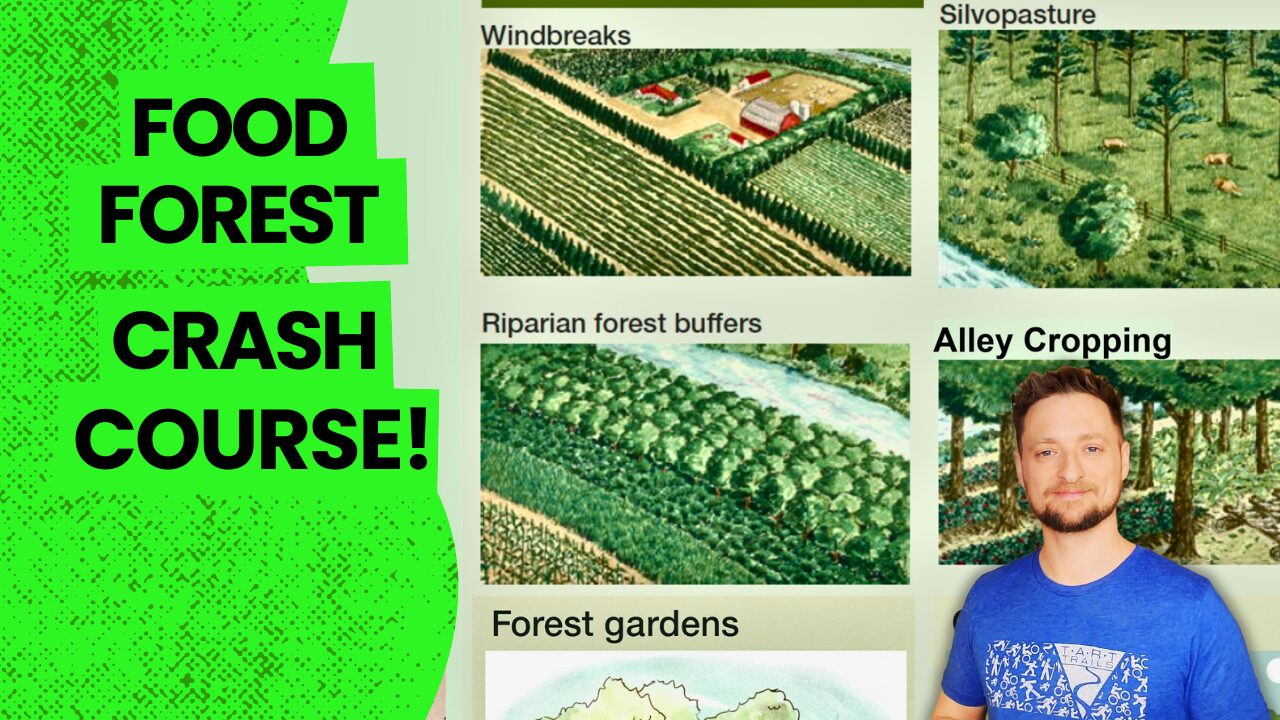
![How to Start a Food Forest – STEP 1: The Tree Nursery [Video]](https://realizehomestead.com/wp-content/uploads/2025/04/How-to-Start-a-Food-Forest-YT-Thumbnail.jpg)
![What is a Food Forest – And Why They Matter [Video]](https://realizehomestead.com/wp-content/uploads/2025/03/Copy-of-Copy-of-Copy-of-Green-Photocentric-Bold-Masculine-How-to-Get-Profit-from-Trading-Youtube-Thumbnail.jpg)
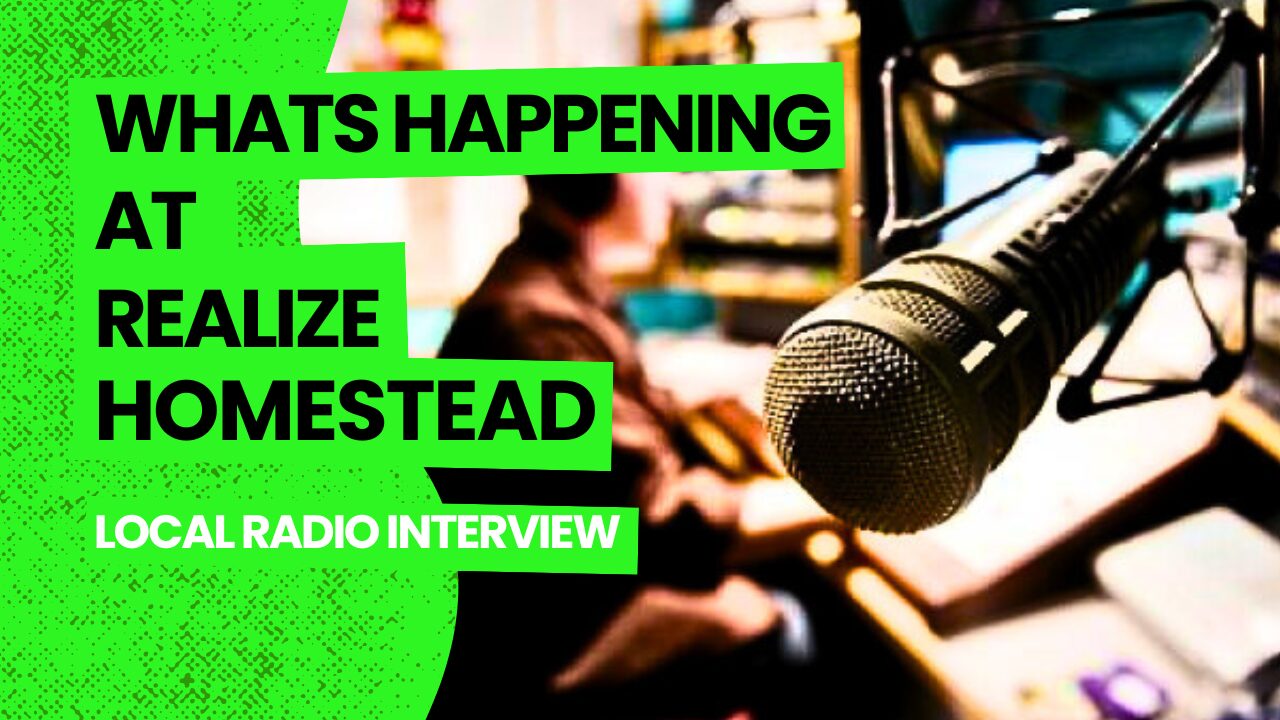

![A Lost and Found Life [Story-Poem] June 2024](https://realizehomestead.com/wp-content/uploads/2024/06/Screenshot_1.jpg)







![How to Start Homesteading with Permaculture – Understanding the Land [VIDEO]](https://realizehomestead.com/wp-content/uploads/2023/09/Green-Photocentric-Bold-Masculine-How-to-Get-Profit-from-Trading-Youtube-Thumbnail-3.jpg)




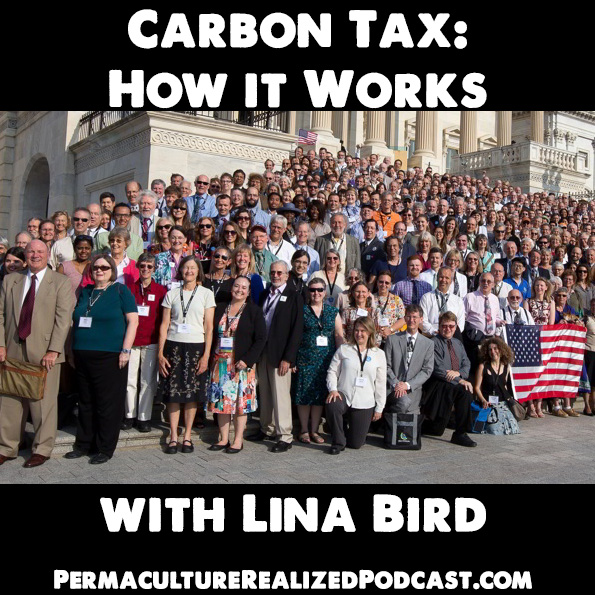



![Introduction to Apple Tree Grafting with Trevor Newman [Video]](https://realizehomestead.com/wp-content/uploads/2017/03/IMG_4229-scaled.jpg)
![Clever Tricks for Planting and Propagating Gooseberry Bushes (and Currants) [Video]](https://realizehomestead.com/wp-content/uploads/2017/03/IMG_4232-scaled.jpg)
![How to Establish Understory/Groundcover Plants in your Orchard or Forest Garden [Video]](https://realizehomestead.com/wp-content/uploads/2017/03/IMG_4223.jpg)

